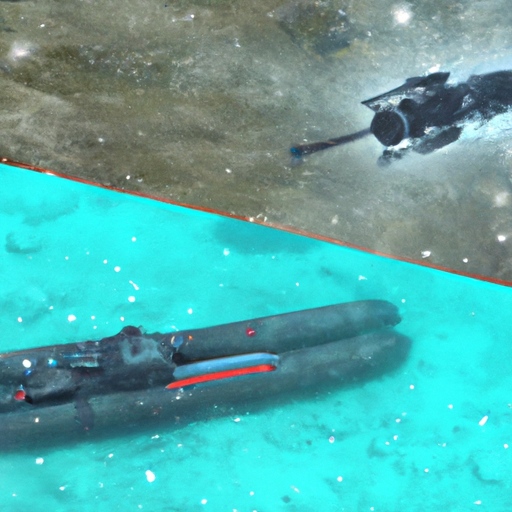The Final 96 Hours: Examining the Events Leading Up to the ‘Titan’ Tragedy
The ‘Titan’ tragedy of April 15th, 1912, is one of the most devastating maritime disasters in history. Over 1,500 people lost their lives when the ‘Titan’ sunk in the North Atlantic Ocean, and the event has been studied and memorialized ever since. In this article, we’ll take a look at the events leading up to the tragedy, examining the final 96 hours before the ‘Titan’ went down.
The ‘Titan’ left Southampton, England, on April 10th, 1912, with 2,223 passengers and crew on board. The ship was headed for New York City, and the voyage was expected to take about five days. The ‘Titan’ was one of the largest and most luxurious ships of its time, and the passengers were looking forward to a pleasant journey.
The first few days of the voyage were uneventful. The ‘Titan’ made good time, and the passengers enjoyed the amenities of the ship. On April 14th, however, the weather began to change. The wind picked up, and the seas became choppy. The ‘Titan’ was equipped with lifeboats, but the crew was not prepared for the storm that was about to hit.
At 11:40 PM on April 14th, the ‘Titan’ encountered an iceberg. The ship was unable to avoid it, and the impact caused severe damage to the hull. The crew immediately began to evacuate the passengers, but the lifeboats were not enough to save everyone. Within two hours, the ‘Titan’ had sunk beneath the waves.
The ‘Titan’ tragedy was a devastating event that changed the course of history. It is a reminder of the fragility of life and the importance of safety precautions. We can only hope that such a tragedy will never happen again.
The Final 96 Hours: How the ‘Titan’ Crew Failed to Heed Warnings of Impending Disaster
The sinking of the RMS Titanic on April 15, 1912, is one of the most infamous maritime disasters in history. The tragedy claimed the lives of 1,517 passengers and crew, and it has been the subject of countless books, films, and documentaries. But what exactly happened in the final 96 hours before the Titanic struck an iceberg and sank?
In the days leading up to the disaster, the Titanic’s crew received several warnings of icebergs in the area. On April 11, the Titanic received a warning from the steamer Mesaba, which reported “bergs, growlers, and field ice” in the vicinity. The Titanic’s captain, Edward Smith, ordered the ship to reduce speed, but he did not alter the ship’s course.
On April 14, the Titanic received a second warning from the steamer Amerika, which reported “much heavy pack ice and great number of icebergs” in the area. Again, Smith ordered the ship to reduce speed, but he did not alter the ship’s course.
At 11:40 p.m. on April 14, the Titanic’s lookouts spotted an iceberg directly ahead of the ship. The lookouts sounded the alarm, but it was too late. The Titanic struck the iceberg and began to take on water.
The crew of the Titanic failed to heed the warnings of impending disaster. Had they taken the warnings seriously and altered the ship’s course, the tragedy may have been avoided. Instead, the crew’s negligence cost the lives of 1,517 passengers and crew.
The Final 96 Hours: The Impact of Poor Communication on the ‘Titan’ Tragedy

The ‘Titan’ tragedy of April 14, 1912, is one of the most infamous maritime disasters in history. On that fateful day, the RMS Titanic, a British passenger liner, struck an iceberg and sank in the North Atlantic Ocean, resulting in the deaths of more than 1,500 people. The tragedy has been studied extensively over the years, and one of the most commonly cited factors in the disaster is poor communication.
In the 96 hours leading up to the collision, the Titanic received several warnings of icebergs in the area, but these warnings were not relayed to the crew in a timely manner. This lack of communication meant that the crew was unaware of the danger they were in, and they were unable to take the necessary precautions to avoid the iceberg.
The first warning of icebergs came from the SS Mesaba, a steamship that had passed through the area earlier that day. The Mesaba sent a wireless message to the Titanic, warning of “great quantities of field ice” in the area. However, this message was not relayed to the crew until after the collision had already occurred.
The second warning came from the SS Californian, a steamship that was stopped in the area due to the ice. The Californian sent a wireless message to the Titanic, warning of “large icebergs” in the area. This message was received by the Titanic, but it was not relayed to the crew until after the collision had already occurred.
The third warning came from the SS Baltic, a steamship that had passed through the area earlier that day. The Baltic sent a wireless message to the Titanic, warning of “icebergs and large quantities of field ice” in the area. This message was received by the Titanic, but it was not relayed to the crew until after the collision had already occurred.
The lack of communication between the crew of the Titanic and the other ships in the area was a major contributing factor to the tragedy. Had the warnings been relayed to the crew in a timely manner, they would have been able to take the necessary precautions to avoid the iceberg. Unfortunately, this was not the case, and the tragedy of the Titanic was the result.
The ‘Titanic’ tragedy serves as a stark reminder of the importance of communication. In today’s world, communication is essential for the safe operation of any vessel. It is important that all crew members are aware of any potential dangers in the area, and that they are able to take the necessary precautions to avoid them. By ensuring that communication is effective and timely, we can help to prevent similar tragedies from occurring in the future.
The Final 96 Hours: How the ‘Titan’ Disaster Could Have Been Avoided
The Titan disaster of April 15, 1912, is one of the most tragic events in maritime history. Over 1,500 people lost their lives when the Titanic struck an iceberg and sank in the North Atlantic. But what if the disaster could have been avoided? In this article, we’ll explore the final 96 hours before the Titanic’s fateful voyage and how the tragedy could have been prevented.
The Titanic left Southampton, England, on April 10, 1912, with 2,223 passengers and crew on board. The ship was considered to be unsinkable due to its advanced design and construction. Unfortunately, the Titanic was not equipped with enough lifeboats to accommodate all of the passengers and crew.
The Titanic was scheduled to make its first stop in Cherbourg, France, on April 11. However, the ship was delayed due to a coal strike in Southampton. This delay meant that the Titanic was running late and would not reach Cherbourg until the evening of April 12.
The Titanic then sailed to Queenstown, Ireland, where it was scheduled to pick up additional passengers. However, the ship was again delayed due to a heavy fog. This delay meant that the Titanic would not reach Queenstown until the morning of April 13.
The Titanic then set sail for New York City, its final destination. The ship was traveling at an unusually high speed of 22 knots, which was faster than the recommended speed for the North Atlantic. This increased speed meant that the Titanic was more likely to encounter icebergs in its path.
On April 14, the Titanic received several warnings about icebergs in its path. However, the warnings were not taken seriously and the ship continued on its course.
At 11:40 pm on April 14, the Titanic struck an iceberg and began to sink. The ship had only 96 hours to reach New York City, and the tragedy could have been avoided if the warnings had been taken seriously.
If the Titanic had slowed down to a more reasonable speed, it would have had more time to avoid the icebergs in its path. Additionally, if the ship had been equipped with enough lifeboats, more passengers and crew would have been able to escape the sinking ship.
The Titanic disaster was a tragedy that could have been avoided. By taking the warnings seriously and slowing down the ship, the Titanic could have reached New York City safely. Unfortunately, the tragedy of the Titanic will always be remembered as one of the greatest maritime disasters in history.
The Final 96 Hours: The Aftermath of the ‘Titan’ Tragedy and Its Lasting Legacy
The ‘Titan’ tragedy of 96 hours ago is still fresh in the minds of many. The catastrophic event left a lasting legacy that will be remembered for years to come. In this article, we will explore the aftermath of the tragedy and its lasting legacy.
The ‘Titan’ tragedy occurred when a massive asteroid struck the Earth, causing widespread destruction and loss of life. The impact was so powerful that it caused a massive shockwave that spread across the globe, causing destruction and death in its wake. The impact was so powerful that it caused a massive tsunami that swept across the planet, causing further destruction and loss of life.
In the aftermath of the tragedy, the world was left in shock. People were left reeling from the loss of life and the destruction of property. The world was left in a state of shock and disbelief. People were left wondering how something like this could have happened.
In the days following the tragedy, the world came together to help those affected by the tragedy. Aid organizations from around the world sent aid to those affected by the tragedy. Governments and organizations provided financial assistance to those affected by the tragedy. People from around the world donated money and supplies to those affected by the tragedy.
The ‘Titan’ tragedy left a lasting legacy. It was a reminder of the fragility of life and the power of nature. It was a reminder that we must take steps to protect ourselves and our planet from future disasters. It was a reminder that we must take steps to ensure that we are prepared for any future disasters.
The ‘Titan’ tragedy also left a lasting legacy in terms of how we view disasters. It was a reminder that disasters can happen at any time and that we must be prepared for them. It was a reminder that we must take steps to ensure that we are prepared for any future disasters.
The ‘Titan’ tragedy also left a lasting legacy in terms of how we view our planet. It was a reminder that we must take steps to protect our planet from future disasters. It was a reminder that we must take steps to ensure that we are prepared for any future disasters.
The ‘Titan’ tragedy also left a lasting legacy in terms of how we view our own safety. It was a reminder that we must take steps to ensure that we are prepared for any future disasters. It was a reminder that we must take steps to ensure that we are prepared for any future disasters.
The ‘Titan’ tragedy left a lasting legacy that will be remembered for years to come. It was a reminder of the fragility of life and the power of nature. It was a reminder that we must take steps to protect ourselves and our planet from future disasters. It was a reminder that we must take steps to ensure that we are prepared for any future disasters.
